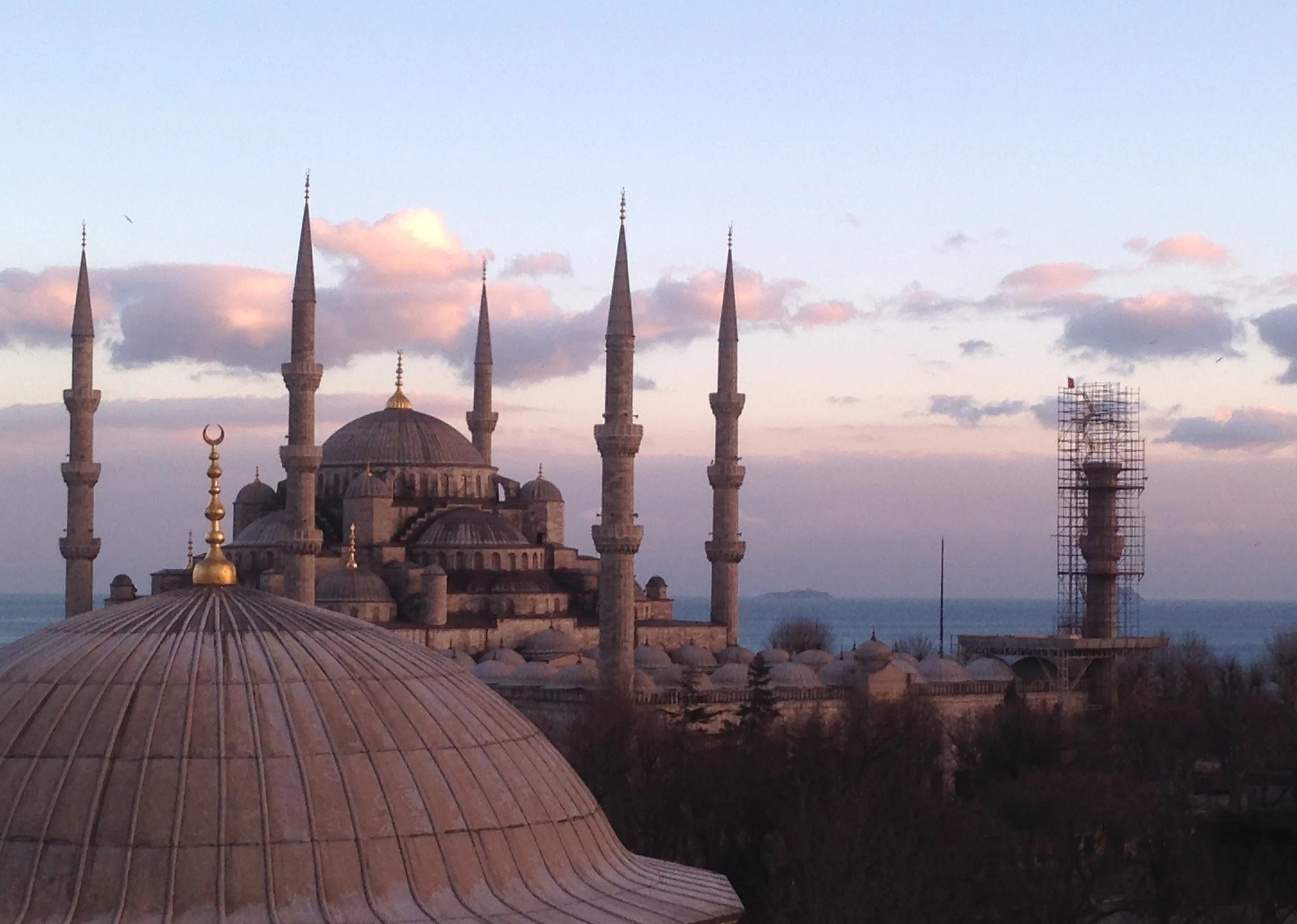Footnotes from Istanbul
Istanbul is a fascinating city that straddles Europe and Asia and is a cultural amalgam of both. With a population of 15 million, Europe’s largest city is easy to navigate thanks to a metro system that connects the major airports to the inner city mostly above ground. The city is replete with historical sites and museums bearing witness to thousands of years of history.
We stayed in a hotel near Taksim Square in the heart of a lively restaurant, shopping, and dining area. From it we were able to take walking tours of the inner city and a boat tour of the harbor.
My favorite historical site was the Hagia Sofia, which was the world’s largest cathedral for a thousand years after it was completed in the year 537 by Emperor Justinian. The name means “Holy Wisdom” and it contains intricate mosaics depicting Christian themes. Minarets and other Moslem adaptations were added when it became a Mosque in the 15th century.
Across a wide square from what was once the Roman Hippodrome is the so-called “Blue Mosque” which was built by the Ottomans in the 17th century.
Visitors can enter the Mosque any day except Friday morning when formal prayers are in session. The Mosque has splendid tiles lining the walls and a huge painted dome. We had to leave our shoes in a protected area and wear slippers to tour the mosque.
Exploring Topkapi
We spent an entire day in the archaeological museum and grounds of the Topkapi Palace. The museum is a complex of four buildings, one of them a tile-covered mansion that was moved to Istanbul to house the largest selection of tiles from the ancient town of Iznik. Inside the main museum is a collection of ancient artifacts from the Fertile Crescent, including Hammurabi’s Code and the oldest love poem in the world (ca. 2037 BC).
The Topkapi Palace was built by the Ottomans in the 15th century, and its walls and domes are lined with decorative tiles. It’s less ornate than the 19th century Dolmabahci Palace, which is situated in a bucolic park along the Bosporus. The latter has an extensive collection of paintings from the Ottoman era while the Museum of Modern Art—also on the banks of the Bosporus—has 20th century paintings, films, and photographs.
Worth visiting is the Basilica Cistern across from the Hagia Sofia; an eerie candle-lit cavern that used to hold the water supply for the city of Constantinople back in Roman times.
Also worth a visit is Galata Tower which offers vistas over the city and the Straits of Bosporus. Unfortunately, the Mosaics Museum and the Museum of Islamic Art were closed for renovation.
The Grand Bazaar in the historic district is a covered market where hundreds of vendors sell everything from food to Turkish rugs, lamps, clothes and souvenirs. For us it was less hassle to wander through the nearby spice market where all kinds of nuts, fruits, and spices are sold.
Crossing The Bosphorus & Back
On a warm day we took a ferry boat across the Bosphorus to the Asian side. We hoped to find the renowned restaurant Ciya whose owner had made it his mission to revive old-style Turkish recipes.
The restaurant—reviewed by the New York Times and the New Yorker—offered an enticing variety of dishes and we weren’t disappointed. Street markets and shops on the Asia side were fun to explore, their products markedly cheaper than on the European side.
Istanbul is known for its hammams or Turkish Baths, and I indulged one day at a locals’ place recommended by our concierge.
After relaxing for a half-hour on a heated marble slab, I was scrubbed from head to toe with an abrasive loofah sponge and washed with a foamy soap bath. A light massage was followed by a dousing with hot water before the attendant presented me with a robe and a cup of apple tea. It was a delicious way to unwind after the sensory overload from a week of touring.




